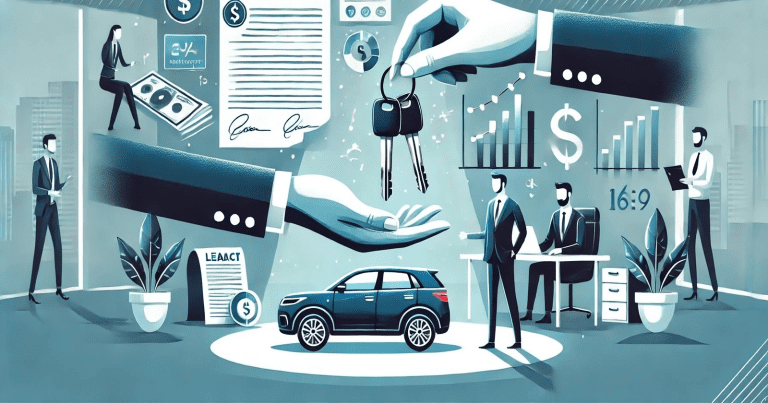Lease finance is one of the strategic financial options that a business can use to manage its resources effectively to achieve efficiency in operations and financial agility. This type of finance allows firms to access equipment or assets through periodic payments rather than significant capital outlay involved in outright purchases. Knowing the advantages and disadvantages of lease financing will empower businesses to make smart choices that support their goal of growth and operational needs, ensuring competitiveness in the respective markets. Lease financing provides benefits such as financial flexibility, capital conservation, etc. However, it also has cons like limited control, dependency factor, and risk of obsolescence. Whether you are a startup looking to optimise your initial investments or an already established company considering upgrading its equipment, this comprehensive analysis will expose you to everything you need to know to navigate the possible chore of lease financing.
What is Lease Financing?
Lease financing is a term of agreement between two parties: the lessor, who owns the asset, and the lessee or user. The lessee can use the asset over a specified period in return for periodic payments. He may be given the right to purchase the asset at the end of the lease term, return the asset, or lease again.
Types of Lease Financing
Lease financing is available in different forms. Each type caters to various business needs and financial goals. The types of lease financing include finance leases, operating leases, tax-oriented leases, sales and leaseback agreements, leveraged leases, and commercial leases. Knowing these different types helps businesses choose the best option for their situation.
Finance Lease
A finance lease is a long-term lease. It is a long-term lease during which the lessee bears most of the risks and benefits of asset ownership. The majority of the life of the asset is covered under the lease term. At the end of the lease, there is usually the option to acquire the asset by paying a near-zero price. This type of lease is popular for expensive machinery or equipment.
A finance lease records the leased asset on the lessee’s balance sheet as an asset. It also records the obligation to make the lease payments on the balance sheet as a liability. This method helps companies get expensive assets and not pay full price at a time. It is very convenient for businesses if they intend to use the asset for a considerable period.
Operating Lease
An operating lease is a short-term lease. In this kind of lease, the lessor owns the asset and bears most risks and rewards. The lessee uses the asset for a certain period and returns it at the end of the lease term. Operating leases, such as computers or vehicles, are often used for equipment that can quickly become obsolete.
In an operating lease, a lessee does not place the asset on his or her balance sheet. This lease structure is treated as an operating expense where lease payments are taken. This structure allows businesses to have lighter and more flexible balance sheets. Operating leases benefit companies that need assets for a short period or want to avoid the risks of ownership.
Tax-Oriented Lease
A tax-oriented lease is accomplished so the lessor is eligible for tax benefits. The lessee owns the asset and duly gets depreciation and other tax deductions. These tax benefits are often transferred to the lessee as reduced lease payments.
Tax-driven leases are widely used in sectors that have significant tax advantages relating to the assets. Companies will use these leases to reduce tax liabilities and decrease general expenses. This lease is appropriate for cost-conscious businesses that are seeking cost-effective financing options.
Sales and Leaseback
A sales and leaseback agreement is when a seller sells an asset to a lessor and then leases it back. This frees up the seller’s capital while still utilizing the asset. The company sells the asset to generate cash and then uses it by leasing it from the buyer. A sale and leaseback is one of the most common agreements in real estate and equipment financing. Businesses do this to improve liquidity, reduce debt, or invest in other areas.
Advantages and Disadvantages of Lease Financing
Lease financing is the process through which businesses obtain the use of specific fixed assets for which they have to pay a series of contractual, periodic, tax-deductible payments. Businesses often opt for lease financing as an alternative to directly purchasing assets, mainly because it is cost-effective and flexible.
Advantages of Lease Financing
Lease financing provides several attractive advantages, especially to companies looking to optimize their resource allocation and maintain flexibility in their financial dealings.
Financial Flexibility
Lease financing offers great financial flexibility, which is useful for businesses with seasonal fluctuations or those who wish to better manage their cash flow. The lease payments can be aligned with generating revenues.
Capital Conservation
One of the most attractive aspects of lease financing is capital conservation. A company does not have to invest huge amounts of money in costly assets; it can lease equipment and save that capital for more promising investment opportunities. This can be a huge advantage for small and startup companies, which cannot afford to spend much money on big investments.
Tax Benefits
This source of finance brings many businesses numerous tax advantages due to lease financing. Most leasing payments are tax-deducted as they come under the operation’s cost, reducing the cost of net leases significantly. Comparatively, when one buys the equipment, they may not gain much in offsetting the initial investment from its depreciation.
Easy Access to Advanced Technology
Leasing allows firms to change equipment more regularly and keeps them working with technology as it comes along without making significant investments. This may be especially important in industries with rapidly changing technologies, such as information technology and medical equipment.
Disadvantages of Lease Financing
Despite the advantages above, there are also several potential drawbacks that firms should consider when they judge the strategy for their particular needs.
Long-Term Higher Costs
Although leasing can seem cheaper for the short term, it costs a much higher overall sum over time when compared with an outright purchase. Capital leases tend to be this way because interest and total lease payments are even greater than the cost of acquiring an asset at hand.
Limited Control Over Assets
Leasing does not offer the same level of control as owning an asset. The lessee is bound by the conditions of the lessor, which can include restrictions on how the asset is used and maintained. This can be challenging for businesses requiring equipment modifications or enhancements.
Dependency on Lessor
Such dependence on a lessor for fundamental business assets will create a risk of dependency on the lessor’s ability to meet their contractual obligations. The lessee may be subjected to financial hardship by the lessor or his inability to undertake the necessary maintenance for the equipment.
Risk of Obsolescence
Certain leases, especially the operating lease type, expose businesses to the possibility of the rented equipment becoming technologically obsolete. In such circumstances, businesses end up at a competitive disadvantage and if a newer, technologically advanced type of equipment were to become available, it could not be accessible financially under an existing lease contract.
Finance Lease vs Operating Lease: Key Differences
This is the most critical distinction between finance and operating leases. A finance lease is a long-term agreement in which the lessee assumes most of the risks and rewards of ownership. An operating lease, on the other hand, is a short-term agreement where the lessor retains ownership.
| Feature | Finance Lease | Operating Lease |
| Ownership | Lessee may acquire ownership at the end. | Lessor retains ownership throughout. |
| Duration | Long-term lease, typically for most of the asset’s life. | Short-term lease, often shorter than the asset’s life. |
| Payment Structure | Higher monthly payments; payments cover the asset’s full cost. | Lower monthly payments; only covers usage. |
| Balance Sheet Impact | Asset and liability recorded on the balance sheet. | No asset or liability recorded; treated as an expense. |
| Tax Treatment | Depreciation and interest can be deducted. | Lease payments are typically fully deductible as an expense. |
| Flexibility | Less flexible; commitment to long-term payments. | More flexible; can terminate or renew easily. |
Advantages and Disadvantages of Lease Financing FAQs
What is Lease Financing?
Lease financing is how organizations use assets by paying a certain amount of money at regular intervals by not purchasing the assets.
What are the two main types of lease financing?
The two major kinds of lease financing are the operating leases, which often is a short-term lease with minimal chances of ownership, and finance leases, which is very much similar to purchasing an asset over some time.
What are the advantages of lease financing?
Key advantages include the availability of financial flexibility, capital conservation, and tax benefits, therefore keeping the business technologically up to date without a significant capital outlay.
What are the disadvantages of lease financing?
Disadvantages of lease financing include that it typically costs more in the long run than purchasing, less control over the assets, and possible dependence on the lessor.
What is the difference between finance lease and operating lease?
The main difference lies in ownership and accounting treatment. The lessee records the asset in a finance lease and assumes ownership risks. In an operating lease, the lessor retains ownership, and the lessee treats payments as operating expenses.


